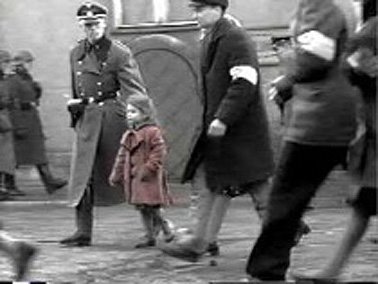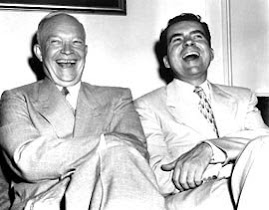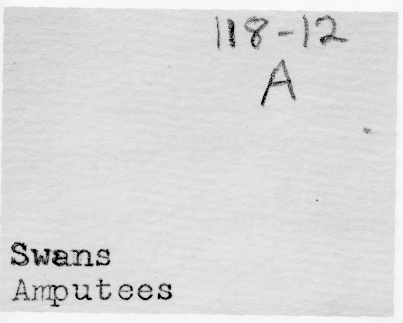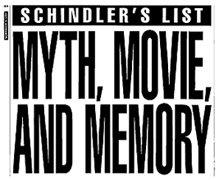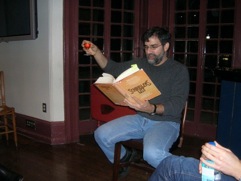 I've been re-reading Who's Afraid of Virginia Woolf? and co-leading a month-long discussion online with a few dozen adults. We discuss every aspect of the play by email. Lots of fun. As anyone who knows the play will remember, George and Martha play a series of always slightly varied games with each other. These are games played to vary the relationship (in part to create sexual excitement through, for instance, role-changing) but also as a means of altering the power dynamic between them. (George married Martha in part because her father is the president of the college where he is a not very successful history professor. So she's got the power but he shifts rules of the games they play in order to challenge those positions; she often likes the rule-shifting because it shows some evidence that George is not entirely flaccid.
I've been re-reading Who's Afraid of Virginia Woolf? and co-leading a month-long discussion online with a few dozen adults. We discuss every aspect of the play by email. Lots of fun. As anyone who knows the play will remember, George and Martha play a series of always slightly varied games with each other. These are games played to vary the relationship (in part to create sexual excitement through, for instance, role-changing) but also as a means of altering the power dynamic between them. (George married Martha in part because her father is the president of the college where he is a not very successful history professor. So she's got the power but he shifts rules of the games they play in order to challenge those positions; she often likes the rule-shifting because it shows some evidence that George is not entirely flaccid.So our group was talking about the elaborate games in this play, and I decided to explore the possible connection between what Albee is doing here in this 1962 work and the Cold War rage for game theory. Here is what I wrote to the group this morning:
Game theory developed rapidly and quite publicly in the period when Albee was first writing plays - in the late 60s. It reached its peak in the early 50s. Gamesmanship, following from militarily-applied gaming scenarios, is largely credited for the White House strategy in dealing with the Cuban missile crisis in the fall of 1962. (Our play was written earlier and produced before the crisis in October that year, but audiences throughout that period would have been quite aware of cold-war versions of gaming as Martha and George engaged in their personal power struggles through ever-varying game scenarios.)
The way George and Martha interact - stepped up, psychological 'warfare'-style games whose rules shift ever more at the brink of danger - has always reminded me of Mutual Assured Destruction (MAD). This balance required open acknowledgment of each side's strengths and vulnerabilities. However, as "prisoner's dilemma" showed us, both players must assume the other is only concerned with self-interest; therefore, each must limit risk by adopting a dominant strategy.
I'm put in mind most keenly of the relationship between cold-war gaming and the "cold war" marriage in this play when George enters and shoots a rifle at Martha. For all we know (audiences), it's loaded and George has gone mad. But he hasn't gone mad at all; he's engaging the MAD psychology. Of course when a gun enters the play, analogies to current notions of warfare make momentarily a lot of sense.
Albee is explicit about the games. But we know these are not fun ha-ha harmless games. These are games played for keeps. When we get into the area of games involving sexual exploitation and domination, the games are dangerous. The gun isn't the place in this play where I am most scared. It's when George strangles Martha - chokes her at the throat. To this day, having lived with this play for years, I still don't know if we are to think that George has really lost control there, and is acting outside of gaming character, or if this is just the most dangerous line-crossing of his many games. (What do you think?)
By the way, the American art avant-garde was very much aware of Cold War game theory and made it relevant in their art. It was much the talk of the New York art scene in the late 50s and early 60s. Marcel Duchamp (a key figure of the modernist revolution back in the teens and 1920s) was making a comeback, and was in New York, promoting surrealism especially (an -ism that attracted Albee). Duchamp was constantly talking about game theory and gaming, and thought new art had to be relevant to it (and critical of its Cold War application). Duchamp was obsessed with chess, and considered it a form of psychological one-ups-manship.
Finally, game theory is a branch of applied mathematics that is used in the social sciences, most notably in economics - BUT ALSO IN BIOLOGY AND HISTORY. It strikes me--speculatively--that George is also gaming the system that permits a young turk biologist to rise in power at the university and suppresses the historian. There's a disciplinary war going on here as well. In part, George is performing his power games for an audience - for Nick the up-and-coming New Man, the breed about to take over. He's out-gaming the gamer and even offering his wife, with her access to power (daddy), as bait in the game. He offers Nick both paternity (pretending Nick's their son for a moment) and patriarchal lineage (fuck the President's daughter).






 "I teach horizontally, meaning that while I might begin with a fixed idea of what I'm going to teach that day, I let it drift rhizomatically way off topic, often pulling it back when it gets too far. I rely on non-fixed materials to teach this way; the whole world is at my fingertips. Should I go off on a tangent about John and Rauschenberg and their love relationship as expressed in Rauschenberg's bed, an image of that bed is always a click away. From there, we can head anywhere into the non-fixed universe, be it film, text or sound. And of course, that always takes us elsewhere. As Cage says, 'We are getting nowhere fast.'"
"I teach horizontally, meaning that while I might begin with a fixed idea of what I'm going to teach that day, I let it drift rhizomatically way off topic, often pulling it back when it gets too far. I rely on non-fixed materials to teach this way; the whole world is at my fingertips. Should I go off on a tangent about John and Rauschenberg and their love relationship as expressed in Rauschenberg's bed, an image of that bed is always a click away. From there, we can head anywhere into the non-fixed universe, be it film, text or sound. And of course, that always takes us elsewhere. As Cage says, 'We are getting nowhere fast.'" 

 that anyone has yet got the imaginative measure of that terrifying day six years ago. Certainly our Tolstoy has not crawled out of the rubble. The closest we have, Don DeLillo, succeeded as an essayist-journalist ("In the Ruins of the Future: Reflections on Terror and Loss in the Shadow of September,” Harper’s, December 2001) but, to my mind, failed as a novelist ("Falling Man"). One reason, perhaps, is that the remembered emotion was instantly buried under a pile of cultural junk.' - Tod Gitlin in his review of Susan Faludi's The Terror Dream (written for
that anyone has yet got the imaginative measure of that terrifying day six years ago. Certainly our Tolstoy has not crawled out of the rubble. The closest we have, Don DeLillo, succeeded as an essayist-journalist ("In the Ruins of the Future: Reflections on Terror and Loss in the Shadow of September,” Harper’s, December 2001) but, to my mind, failed as a novelist ("Falling Man"). One reason, perhaps, is that the remembered emotion was instantly buried under a pile of cultural junk.' - Tod Gitlin in his review of Susan Faludi's The Terror Dream (written for 


